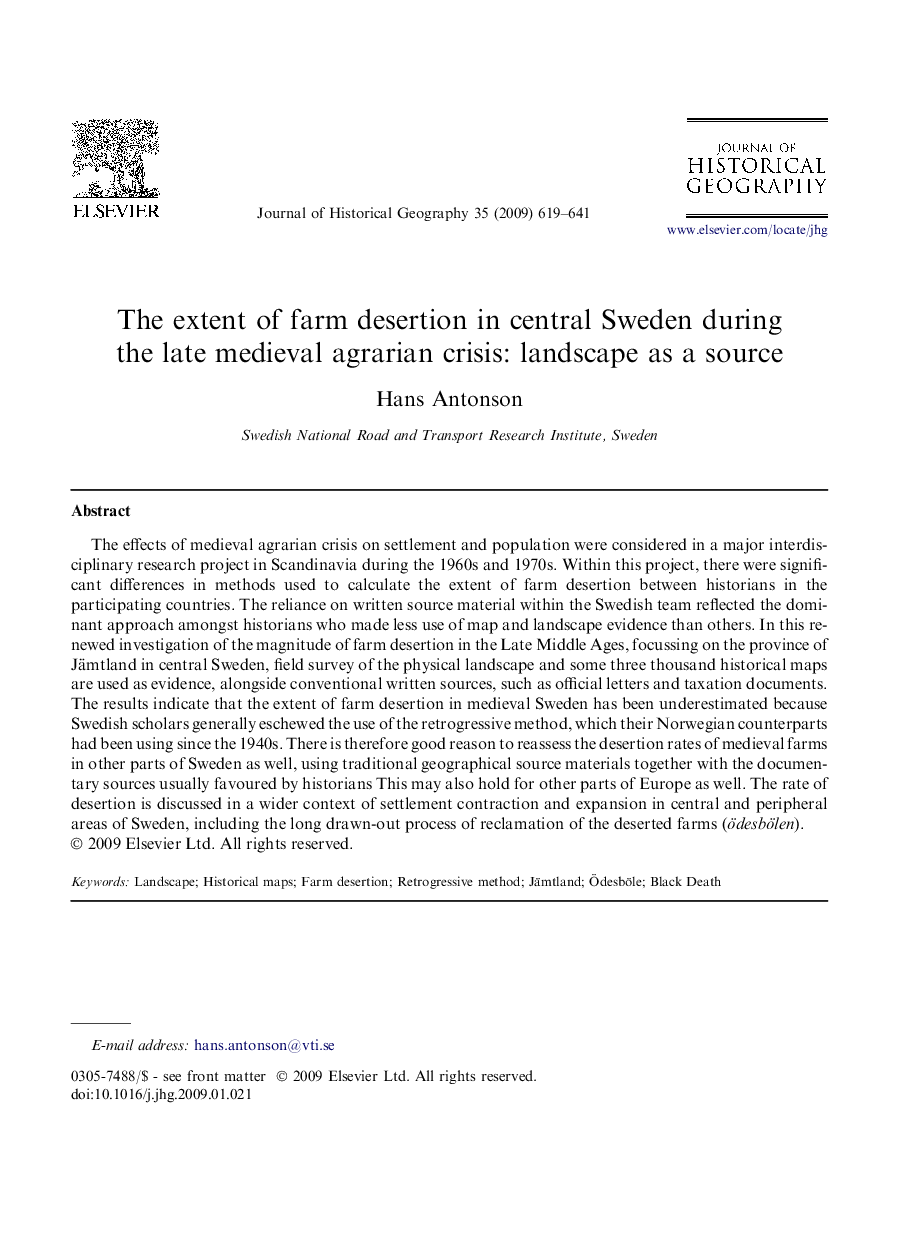| Article ID | Journal | Published Year | Pages | File Type |
|---|---|---|---|---|
| 1039720 | Journal of Historical Geography | 2009 | 23 Pages |
The effects of medieval agrarian crisis on settlement and population were considered in a major interdisciplinary research project in Scandinavia during the 1960s and 1970s. Within this project, there were significant differences in methods used to calculate the extent of farm desertion between historians in the participating countries. The reliance on written source material within the Swedish team reflected the dominant approach amongst historians who made less use of map and landscape evidence than others. In this renewed investigation of the magnitude of farm desertion in the Late Middle Ages, focussing on the province of Jämtland in central Sweden, field survey of the physical landscape and some three thousand historical maps are used as evidence, alongside conventional written sources, such as official letters and taxation documents. The results indicate that the extent of farm desertion in medieval Sweden has been underestimated because Swedish scholars generally eschewed the use of the retrogressive method, which their Norwegian counterparts had been using since the 1940s. There is therefore good reason to reassess the desertion rates of medieval farms in other parts of Sweden as well, using traditional geographical source materials together with the documentary sources usually favoured by historians This may also hold for other parts of Europe as well. The rate of desertion is discussed in a wider context of settlement contraction and expansion in central and peripheral areas of Sweden, including the long drawn-out process of reclamation of the deserted farms (ödesbölen).
